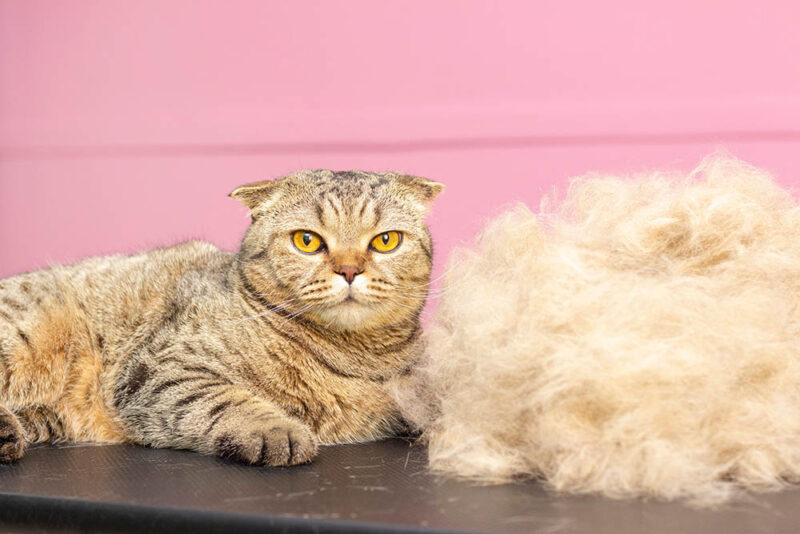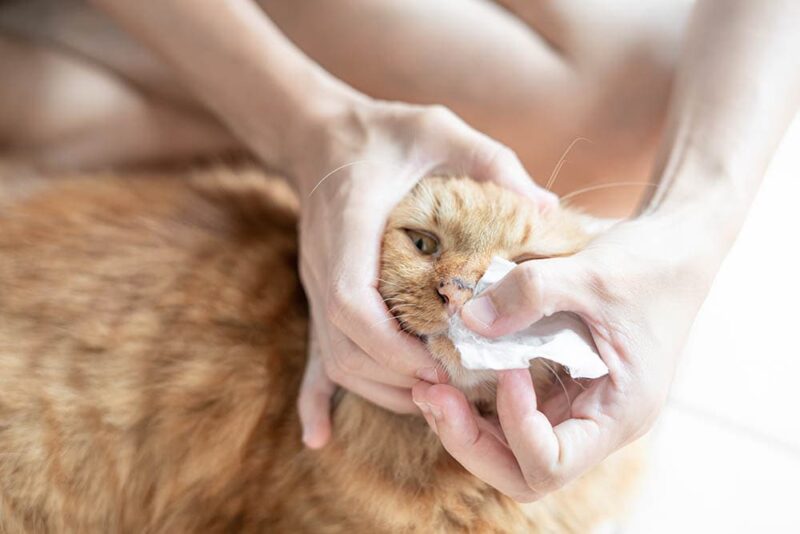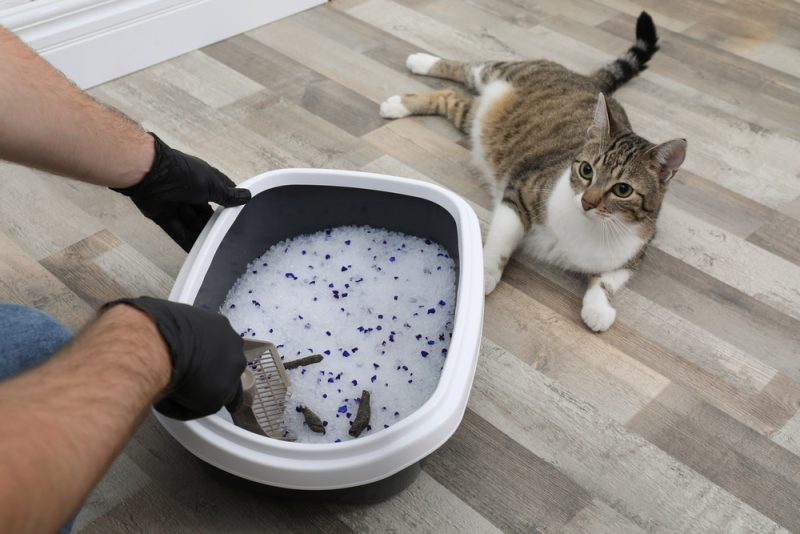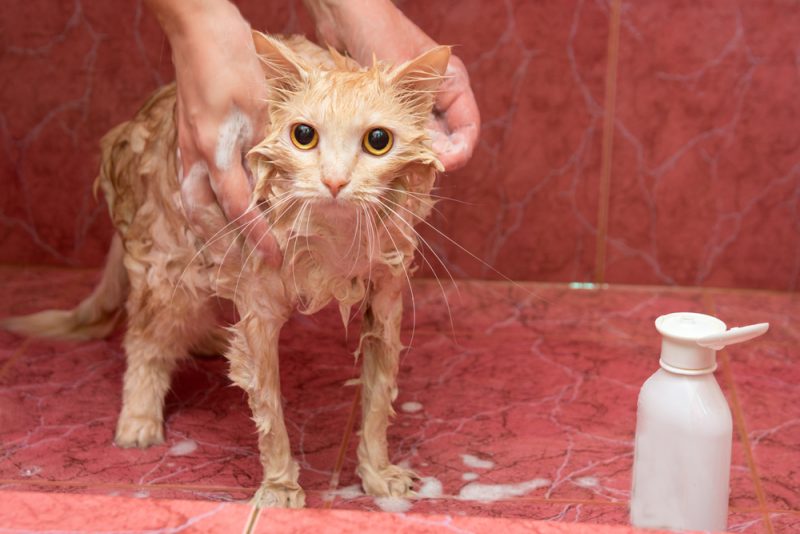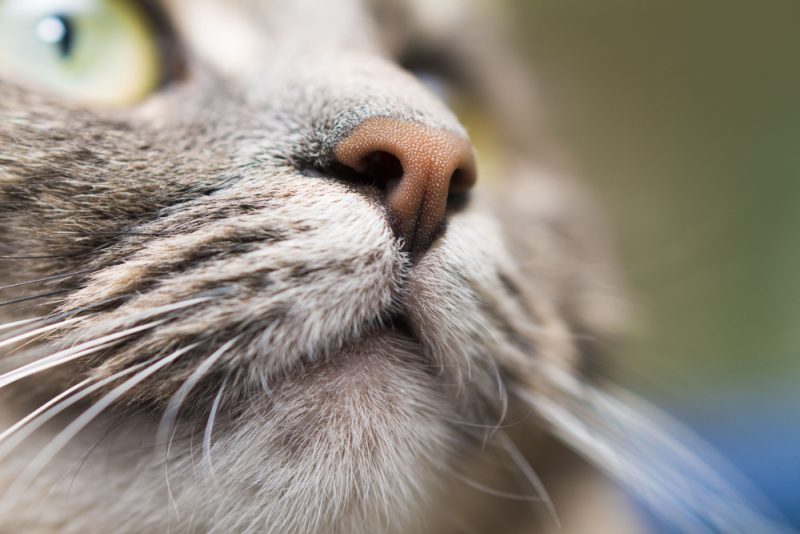In this article
Being a foster parent for cats living in shelters is one of the most rewarding things you can do if you’re a pet lover. It can be difficult at times, though, for a variety of reasons. You can get attached to the felines coming through your home, or you might find yourself doing more work than you expected, or you could find yourself with a formerly abused animal that needs extra care and attention.
So, if you’re just starting out on your cat foster parent journey, how can you be a good foster parent? We have 19 tips for being a good cat foster parent below! With these, you’ll do an excellent job (and remember not to be too hard on yourself as you’re learning the ropes; foster kitties are just happy to have a home and love!).

How to Become a Foster Parent for Cats
First things first—how do you become a foster parent for cats? Your first step will be to look up your local shelter or rescue to determine what the requirements for becoming a foster parent are and whether you meet them. If you meet the requirements, you’ll need to either fill out paperwork online to apply to become a cat foster parent or contact your shelter or rescue to start the application process.
After that, there will likely be an in-person interview and a home check. There may also be training sessions on how to be a cat foster parent. If selected, you’ll need to prepare your home for your first foster kitty!
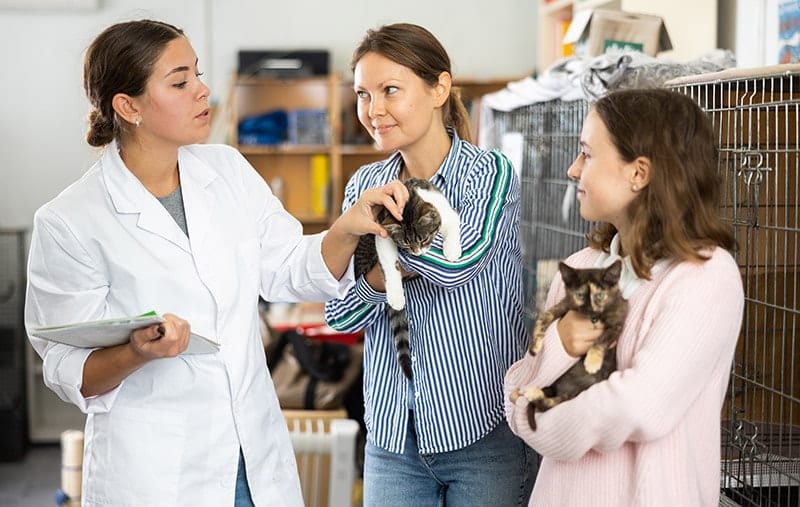

The 19 Tips for Being a Good Cat Foster Parent
Ready for some tips that will help you be an amazing foster parent to cats? We’ve broken our tips into sections, so you’ll find general tips below, as well as tips for fostering kittens, nursing mothers, and adult felines!
General Tips for Being a Good Cat Foster Parent
You should do a few general things to welcome any foster cat to your home, no matter their age or situation.
1. Know what supplies you’ll need.
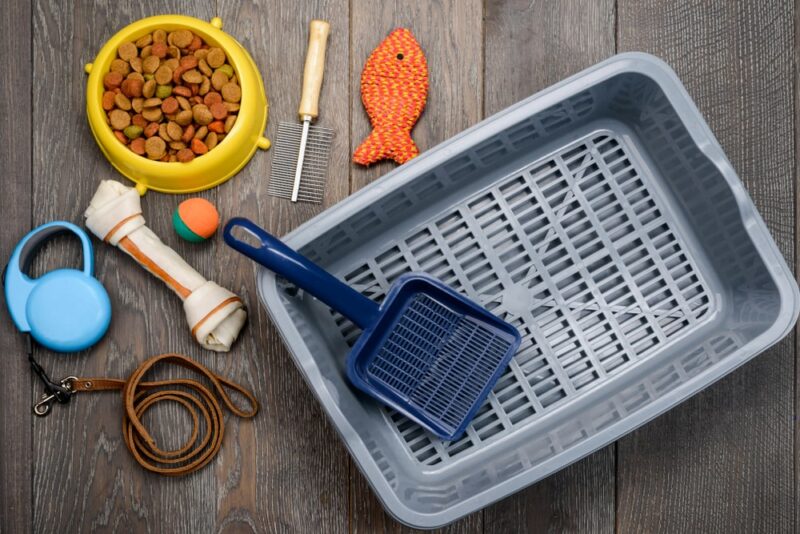
Some shelters and rescues may have the budget to provide you with a litter box, bed, food, and other essentials, but many will not. You’ll need everything a cat could need in your home already. However, you should check with the shelter or rescue before purchasing anything to see if your foster needs specific items, such as a particular food for dietary reasons or a modified litter box because they aren’t able to get into a regular one. The good news about purchasing all your own items for a foster cat is that they can be reused with the next foster cat!
2. Find out the shelter/rescue’s policies on how to handle medical or other emergencies.
Each shelter or rescue will have procedures in place to handle an emergency, medical or otherwise. Some places might want you to bring a cat back to them for medical care, while others may be fine with you taking a foster cat to your own vet. For non-medical emergencies, such as behavioral issues, you’ll need to know the protocol on how to handle the problem. So, check with a shelter/rescue before fostering and ensure you get information on handling anything unexpected that could occur.
3. Ask about any physical limitations, medical, or behavioral problems a cat may have.
Not all shelter or rescue cats will be happy, well-adjusted felines (in fact, many will not be). Some foster cats might suffer from health problems or disabilities that require extra attention and care. Other foster cats may come from abusive or neglectful homes and have behavioral problems that arose from their former circumstances; these cats will need tons of love and attention, and a shelter or rescue might even want you to work with a behaviorist or something similar. Essentially, be aware of what exactly you’re getting into when fostering a cat so you know how to best take care of kitty.
4. Go slowly introducing a foster cat to other pets in your home.

If you have other pets in your home and are fostering a cat, you’re actually giving kitty a wonderful opportunity to show how adoptable they are (provided they can get along with your other animals). To help them show off that adoptability, be sure to introduce the new animal in the home to your other pets slowly! A new foster cat should be set up in their own space to begin (and many shelters or rescues will ask you to quarantine a foster for a few days or even weeks) before slowly being allowed to explore their new surroundings and meet others. Let all the animals in your home sniff each other from afar before seeing how they do in the same room.

Tips for Being a Good Foster Parent to Kittens
Sometimes, kittens are orphaned, whether because they were dumped, separated from their mother, the mother cat was sick, or because something happened to her. How you care for orphaned kittens will depend partly on how old they are; for example, kittens who are merely weeks old need to be fed from a bottle.
However, hand-rearing newborn or very young kittens is a big responsibility and should not be taken lightly. Most shelters and rescue organizations will have trained and experienced volunteers who perform these tasks until the kittens are weaned, or they will provide training for interested future fosters.
Here are a few tips that will help you care for younger kittens.
5. Kittens must stay in a box with tall sides; the box should be disposable.
Kittens (especially the itty-bitty ones) will need to be homed in a box with sides tall enough that they can’t climb out. You’ll want to go with a basket or a disposable box for their little nest, with plenty of vet beds or inco pads because kittens will soil the box (at least until they’re old enough to go to the bathroom on their own). Clean the box daily. You may need to replace that box a time or two before they’re old enough to leave the box and start exploring the larger world around them!
6. Disposable or washable bedding will be needed.

Due to their propensity to soil the area, you’ll also need disposable or washable bedding in their nest. Replace or wash their bedding often to ensure kittens stay healthy. And don’t worry; once they’re old enough to leave their nest, you can teach them how to use the litter box.
7. Your kitten’s box should have a heating pad or warm water bottle.
Kittens need to be kept quite warm for their first few weeks of life, as they can’t regulate their body temperature very well. Up until about three weeks, the kittens’ nest should be around 90°F; after that, the temperature can be knocked down to 80°F and then 70°F over 4-6 weeks.
8. If you are using formula, it should be warmed in a bottle or syringe with hot water, not a microwave.
If you have orphaned newborn kittens, you’ll need to feed them formula since they can’t feed from their mother. Just like with human babies, formula should be made by mixing warm water that was boiled and cooled down to the adequate temperature and mixed with the milk powder before being placed in the bottle or syringe you’ll be using. You don’t want to warm up formula in the microwave, though, as it could become overly hot and burn a kitten’s mouth. Instead of a microwave, you can place the bottle or syringe in hot water so the temperature is raised slowly enough to not burn.
9. Always lay kittens on their stomach during feedings.
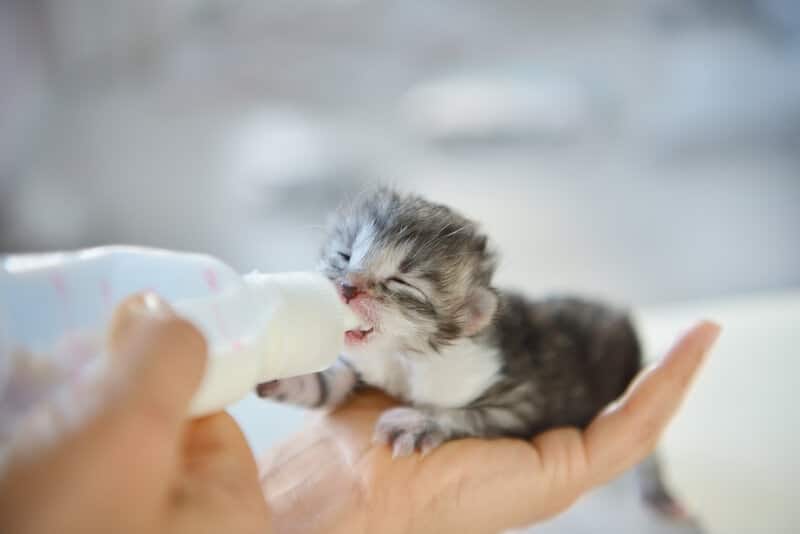
If you’re feeding kittens from a bottle or syringe, always place them on their stomachs during feedings! This is incredibly important, as putting them on their backs could cause the formula to go down their windpipe, causing them to aspirate. Keeping kittens on their stomach while feeding also mimics how they would feed from mama cat, which aids in creating a surrogate bond between you and kitty.
10. If kittens are under three weeks of age, they will need help going to the bathroom.
You might not have known this, but kittens under the age of three weeks cannot urinate or defecate on their own. This means you will need to help them go to the bathroom. How do you do that? You’ll need to mimic what mama cat would do.
A kitten’s mother will lick them around the genital area and anus to get the kitten to go to the bathroom. You’ll need to stimulate kittens the same way by using a soft tissue or a wet cotton ball to rub very gently around these areas to encourage urination and defecation. Do this before and after each meal. At around 4 weeks, they can be introduced to a litter box.
11. Kittens can start eating solid food and drinking water around the age of 1 month.
Kittens can start trying out solid food once they reach a month old. Start them out on wet food, then work up to dry food. If a kitten doesn’t seem interested in the food you’re giving them, they may not know what it is. Smear a little on their face (somewhere they can reach with their tongue). Once they lick it off, they should understand what’s going on and eat the food they’re given (although you may need to try this trick a time or two).
When you switch to dry food, you might want to moisten it the first couple of times it’s given. For the next 2 weeks, continue offering them milk, while they should be fully weaned by the age of 6-7 weeks.
Tips for a Nursing Mama Cat
You might find yourself fostering a mama cat who has recently had kittens and is nursing. While a lot of the work of fostering mama and newborns will be similar to that of regular fostering, you’ll need to do a few things that will help keep mama and her babies safe and happy.
12. Keep mama and her kittens in a large box with layered bedding.
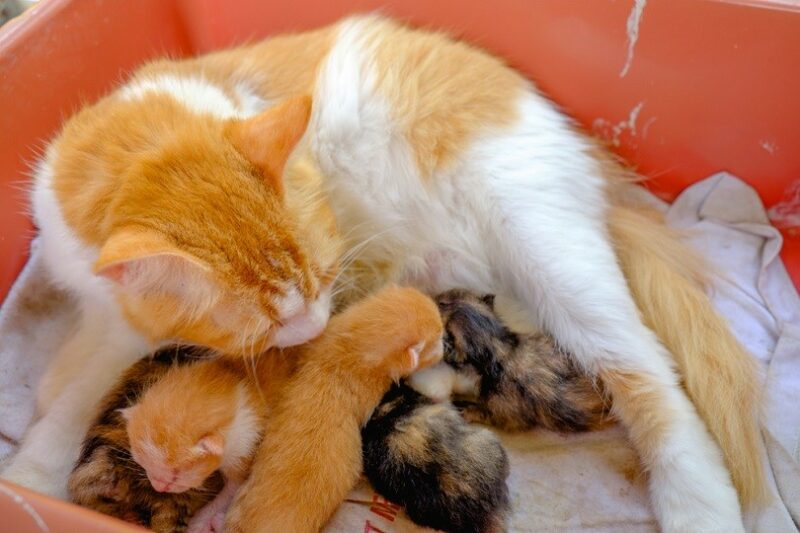
You’ll need a box large enough to hold mama cat and all her kittens and one with sides tall enough that the kittens can’t make their way out. However, the sides should also be low enough for mama cat to jump out when she wants. Layered bedding is a good idea since messes will be made in this little nest. With layered bedding, you can simply rip the top layer off to dispose of or wash as needed.
13. Make sure mama cat is eating nutrient-rich food.
A nursing mama cat needs all the nutrients she can get! Be sure you’re feeding mama food that is nutrient-rich so she has the strength and energy to manage and feed her kittens. You can either place a bowl of food in the box with mama or leave it somewhere she can easily reach when she wants to.
14. Let mama cat do her thing in peace.
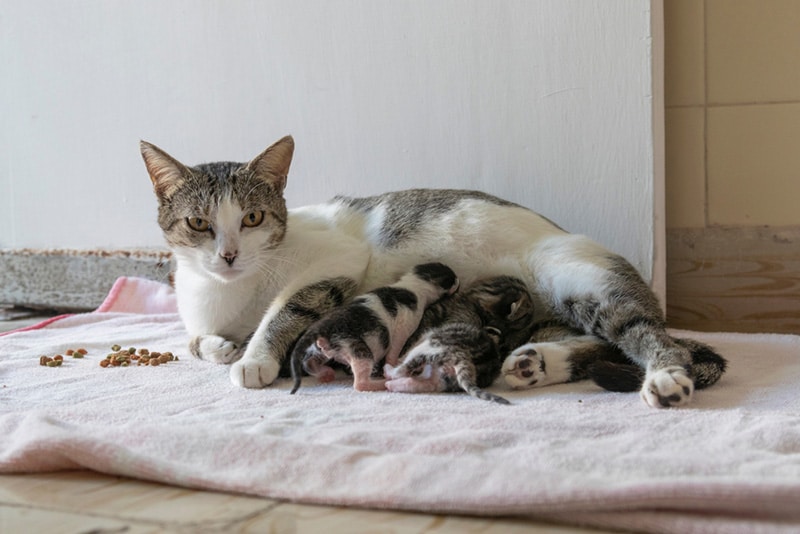
Mama cats know what they’re doing, so let them do it. Let the mother cat care for and feed her kittens on her own terms, and let her jump out of the box for some alone time when needed. You should step in only if a mama cat isn’t paying attention to or feeding one or more of her kittens. Otherwise, leave mama to her own devices.
15. When kittens get old enough to move around, you can contain them with a baby gate or playpen.
Kittens will eventually become too big (and curious) to be held in a box, so you’ll have to let them out into the larger world at some point. While kittens need the chance to explore, as that’s how they learn, they also need to be confined so they don’t get injured. You can keep them in a single room with a baby gate (but a gate that mama cat can jump) or put them in a playpen to give them more space to move around and play.

Tips on Being a Good Cat Foster Parent to an Adult Feline
Finally, you’ll probably be fostering quite a few adult cats. How to foster an adult cat will vary by feline, as some might have health issues that require specific medical care or behavioral problems that need to be worked on, but here are a few general things to do to make kitty feel welcome.
16. Start the cat off in a dedicated space.
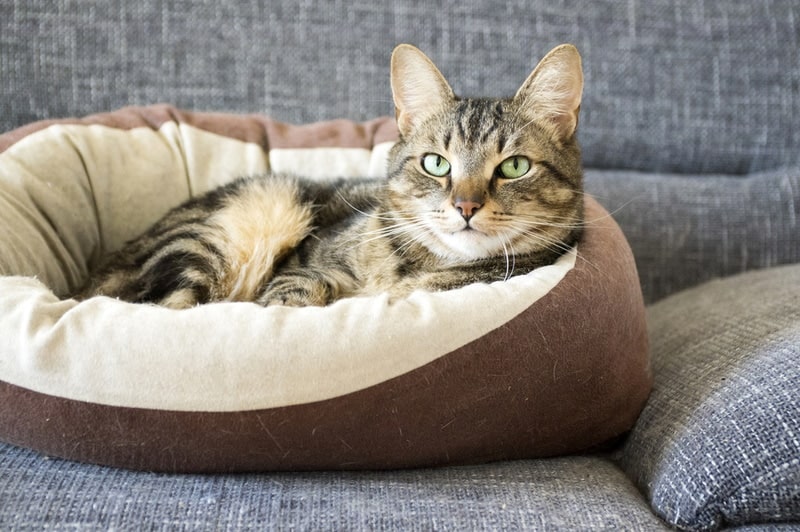
Any new cat coming into your home should have their own dedicated space (this is particularly true for homes with other pets). This could be a room where they stay by themselves for the first few days or just an area gated off from everyone else. This should just be a temporary space, as it’s designed to help a foster cat get used to their new space and all the new smells, sounds, and people or animals. Eventually, a foster cat can be allowed to wander around the rest of the house when they feel comfortable.
17. Be cautious when first approaching the kitty.
A foster cat that’s just moved in may be scared or anxious (especially if they’ve had bad experiences with people in the past). Be cautious when you first try approaching them. Keep yourself non-threatening, move slowly to avoid scaring them off, and be prepared for possible hissing or hiding. Allow them time to relax, and respect their boundaries without forcing an interaction until they are ready for one.
18. Be sure your foster cat is eating.
Sometimes, foster cats are too anxious to eat when they first move into a place or may just dislike the food you’re trying to give them. However, letting a cat go longer than a day without food can negatively affect their health. If your foster cat isn’t eating, try tempting them with something especially tasty, like tuna or treats! If they are still not eating, contact your vet immediately.
19. Give the kitty plenty of attention and love!
Another important thing you can do to be a good cat foster parent is to give your foster kitty plenty of attention and love! Cats from shelters and rescues have been abandoned, gotten lost from their original family, or come from a bad situation. These kitties need all the attention and love you can provide for them! So, spend lots of time with your foster cat. Play with them, let them cuddle up with you, and ensure they know they’re loved.

Conclusion
Being a cat foster parent is a rewarding task that can save lives. If you’re considering becoming a foster parent for cats, these tips will help you become a great one! Fostering can take a lot of work and effort, but it’s well worth it, and as long as you’re showering a foster cat with love and providing all their needs, you’ll be doing an excellent job.
Featured Image Credit: Jumpstory





